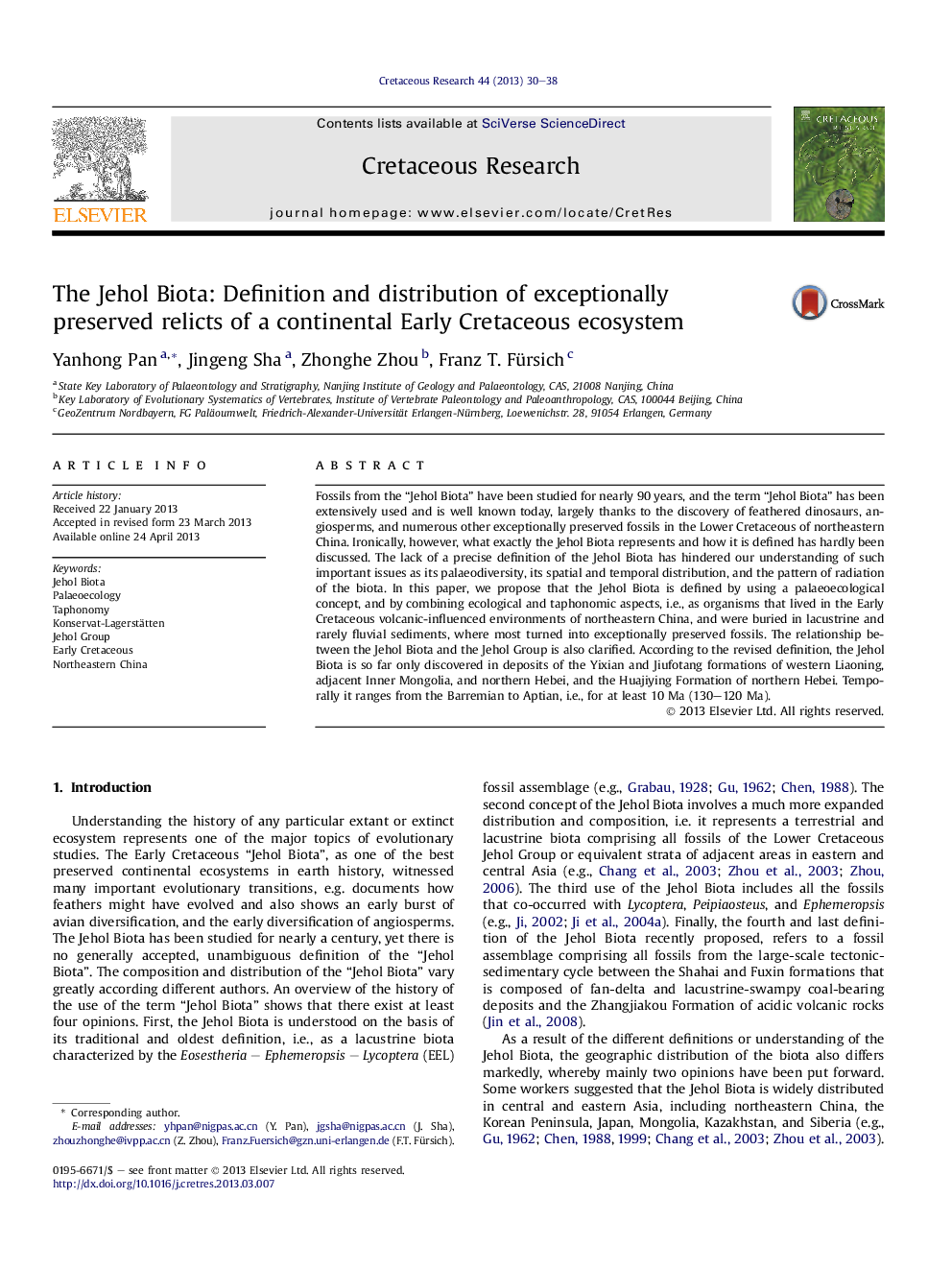| کد مقاله | کد نشریه | سال انتشار | مقاله انگلیسی | نسخه تمام متن |
|---|---|---|---|---|
| 4747229 | 1642078 | 2013 | 9 صفحه PDF | دانلود رایگان |
• The Jehol Biota is defined by using a palaeoecological concept, and by combining ecological and taphonomic aspects.
• The relationship between the Jehol Biota and the Jehol Group is also clarified.
• The distribution of the Jehol Biota is evaluated based on the new definition.
Fossils from the “Jehol Biota” have been studied for nearly 90 years, and the term “Jehol Biota” has been extensively used and is well known today, largely thanks to the discovery of feathered dinosaurs, angiosperms, and numerous other exceptionally preserved fossils in the Lower Cretaceous of northeastern China. Ironically, however, what exactly the Jehol Biota represents and how it is defined has hardly been discussed. The lack of a precise definition of the Jehol Biota has hindered our understanding of such important issues as its palaeodiversity, its spatial and temporal distribution, and the pattern of radiation of the biota. In this paper, we propose that the Jehol Biota is defined by using a palaeoecological concept, and by combining ecological and taphonomic aspects, i.e., as organisms that lived in the Early Cretaceous volcanic-influenced environments of northeastern China, and were buried in lacustrine and rarely fluvial sediments, where most turned into exceptionally preserved fossils. The relationship between the Jehol Biota and the Jehol Group is also clarified. According to the revised definition, the Jehol Biota is so far only discovered in deposits of the Yixian and Jiufotang formations of western Liaoning, adjacent Inner Mongolia, and northern Hebei, and the Huajiying Formation of northern Hebei. Temporally it ranges from the Barremian to Aptian, i.e., for at least 10 Ma (130–120 Ma).
Figure optionsDownload as PowerPoint slide
Journal: Cretaceous Research - Volume 44, August 2013, Pages 30–38
